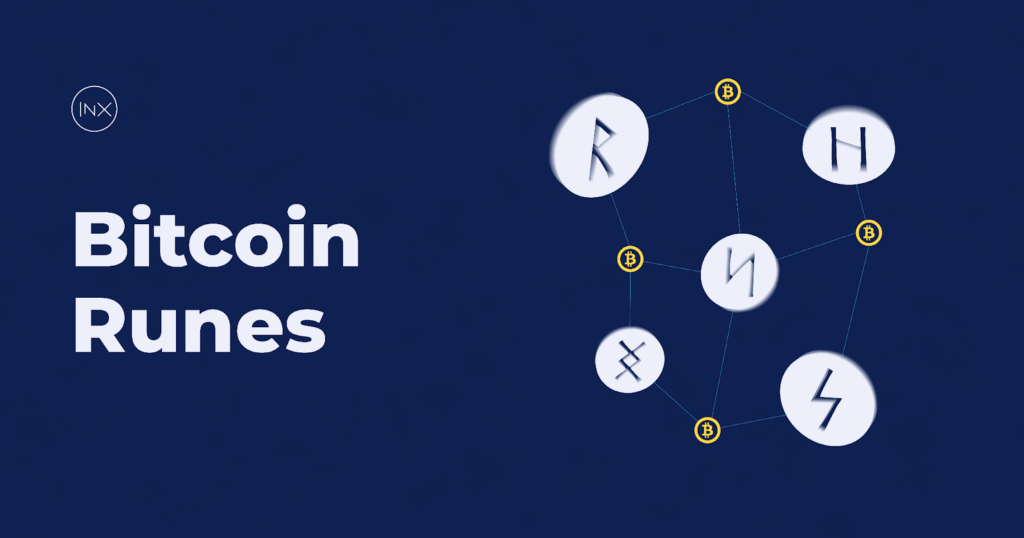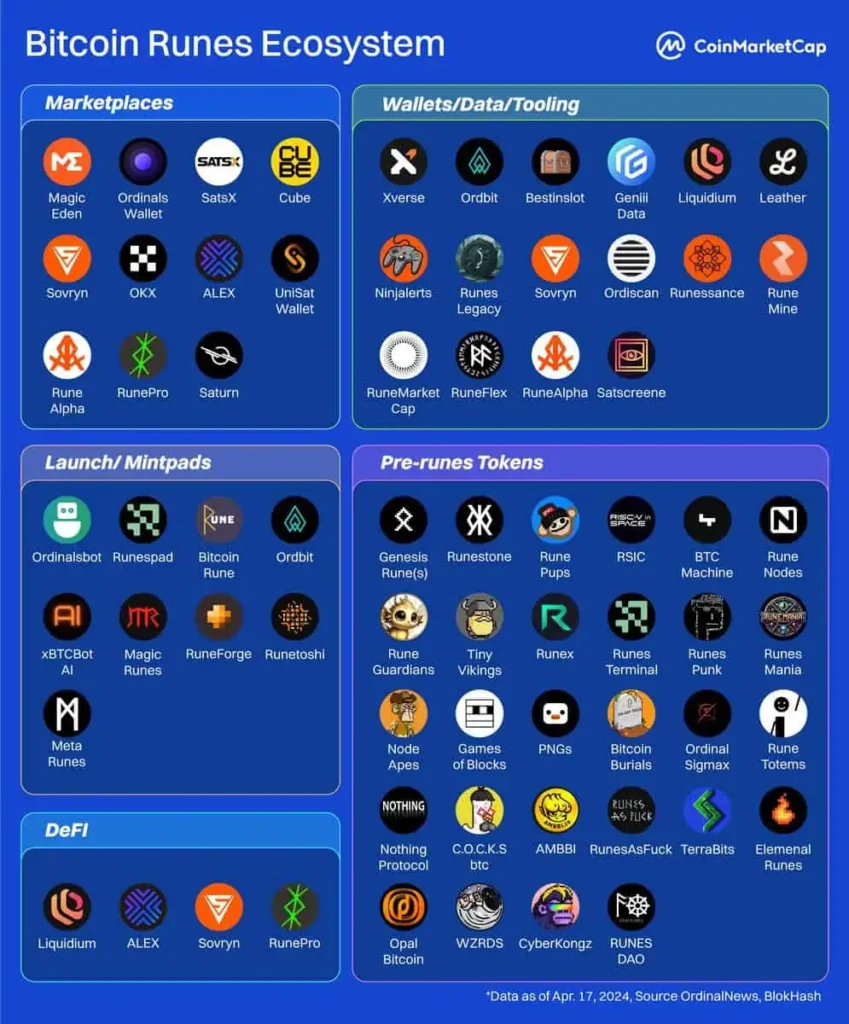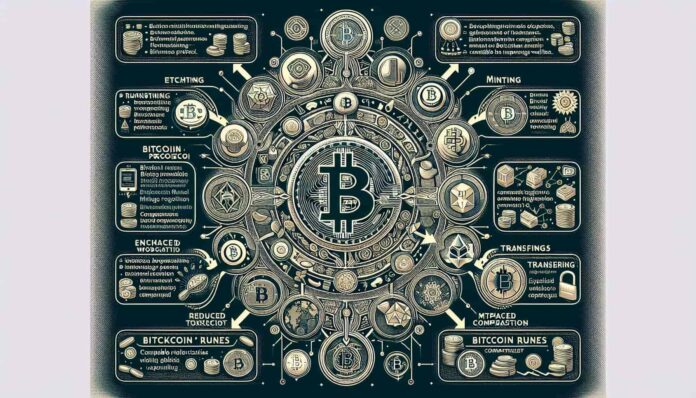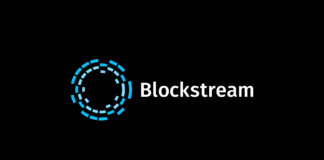In the evolving landscape of blockchain technology, the runes protocol emerges as a pivotal innovation, reshaping the way we understand and utilize Bitcoin’s vast potential. At its core, the this protocol leverages Bitcoin’s op_return function, facilitating a multitude of functionalities including the creation of brc-20 tokens, the embedding of etching data, and the integration with the lightning network, thereby expanding Bitcoin’s utility beyond a mere digital currency. This breakthrough is instrumental in enabling the development of decentralized applications (dApps) and supporting stablecoins, thereby addressing some of the most pressing challenges in the cryptocurrency space.
The significance of the protocol lies not only in its technical prowess but also in its ability to fuel wider adoption of blockchain technology, making it a subject of keen interest among developers, investors, and enthusiasts keen to explore what runes, rune crypto, and rune coin represent in this innovative ecosystem.
This article delves into the intricate workings of the runes need protocol, outlining its origin, key features, and how it operates within the broader Bitcoin blockchain. It explores the unique aspects of rune crypto and rune tokens, shedding light on the technology behind the protocol, including the groundbreaking ordinals protocol, taproot assets, and the utxo model. Moreover, it assesses the impact of Bitcoin runes on blockchain technology and compares it with other protocols to highlight its distinctiveness.
The discussion extends to compatible wallets, real-world use cases of BT runes, and a comprehensive look at the ecosystem fostered by this protocol. By providing a detailed examination of these elements, the article offers valuable insights into the transformative potential and the practical applications of the protocol, marking a significant shift in the digital asset landscape.
To be Honest, I should give a TLDR warning, but if you are really interested in learning about the Protocol, read along.
Table of Contents
Understanding Bitcoin Runes

Technology Behind Runes Protocol
The protocol, developed by Casey Rodarmor, utilizes Bitcoin’s UTXO model to issue and manage fungible tokens efficiently on the Bitcoin blockchain. This innovative token standard is designed to integrate seamlessly with Bitcoin’s existing infrastructure, leveraging the OP_RETURN opcode to embed token-related data within Bitcoin transactions [9][10]. The use of this opcode ensures that the data does not affect the transaction’s validity while enabling a variety of tokenization and transfer functionalities.
Use Cases of Bitcoin Runes
Bitcoin Runes are primarily used for creating and managing digital assets across a wide spectrum, including cryptocurrencies, real estate, and commodities. This capability facilitates ownership transfers, fractional ownership, and enhanced liquidity and accessibility of these assets [10]. Additionally, Bitcoin Runes play a crucial role in decentralized finance (DeFi) within the Bitcoin ecosystem. They support various DeFi applications such as decentralized exchanges (DEXs), lending platforms, and liquidity pools, enabling automated lending, borrowing, and yield farming activities [10].
Ecosystem of Runes Protocol
The ecosystem surrounding the protocol is robust, supporting a wide range of functionalities and applications. Runes ensure enhanced security and interoperability by utilizing Bitcoin’s security features and network effects. The protocol supports the tokenization of assets, which not only bolsters security but also enhances the utility and value proposition of the Bitcoin blockchain [10]. Furthermore, the Runes protocol fosters decentralized governance through smart contracts, which dictate token functionality and empower decision-making within the ecosystem [10].

Key Features of Bitcoin Runes
Runes protocol boasts several distinctive features that enhance its functionality and efficiency. These include:
- Compatibility with Bitcoin Blockchain: Runes are engineered for seamless integration with the Bitcoin blockchain, capitalizing on its established security and reliability [10].
- Robust Security: Utilizing Bitcoin’s Proof-of-Work consensus mechanism, Runes ensure high levels of security and immutability [10].
- Interoperability with Bitcoin’s Native Currency: This feature allows Runes to interact seamlessly with Bitcoin, facilitating integration with existing infrastructure and enhancing overall utility [10].
- Decentralized Governance: The use of smart contracts in Runes enables decentralized governance and effective decision-making within the ecosystem [10].
- Enhanced Privacy: Runes provide privacy features that ensure transaction confidentiality while maintaining transparency on the blockchain [10].
These features collectively contribute to the effectiveness and appeal of the Runes protocol, making it a significant advancement in the functionality of the Bitcoin blockchain.
Origins of the Runes Protocol
The Protocol, a significant innovation within the Bitcoin network, was introduced to address the limitations of previous token standards and enhance the functionality of Bitcoin’s blockchain. This section explores the origins and development of the Protocol, highlighting its foundational concepts and the strategic timing of its launch.
Development and Introduction of Runes Protocol
The inception of the R Protocol can be traced back to the innovative work of Casey Rodarmor, who is also credited with the development of the Bitcoin Ordinals. Rodarmor’s pioneering efforts led to the creation of a new token standard that was officially presented in September 2023 [15][17]. This new protocol was designed as a more efficient alternative to the experimental BRC-20 standard, which had quickly gained popularity but also led to significant network congestion due to the accumulation of “junk” UTXOs [17].
Strategic Launch Timing
The R Protocol was strategically launched at block 840,000, coinciding with the Bitcoin halving event on April 20th, 2024 [16]. This timing was intentional, as the halving reduces miners’ block rewards, potentially increasing reliance on transaction fees for network security. The introduction of Runes was seen as a way to generate demand for block space, thereby driving up transaction fees and contributing to the security of the network [16].
Addressing Inefficiencies and Enhancing Security
This Protocol was developed to address the inefficiencies of the BRC-20 tokens and to provide a more streamlined and secure method for creating fungible tokens on the Bitcoin network. Unlike previous protocols that required off-chain data or a native token, Runes operates solely within the Bitcoin network using a UTXO-based approach. This method not only simplifies the token creation process but also reduces the risk of network congestion by avoiding the generation of unnecessary UTXOs [14][18].
Innovations in Token Standardization
The protocol utilizes the OP_RETURN output, a feature of Bitcoin that allows for the embedding of a small amount of data in transactions without affecting the transaction’s operational throughput. This innovation is crucial as it maintains the integrity and efficiency of the Bitcoin network while enabling the tokenization of various assets [18]. By focusing on simplicity and security, Runes offers a robust platform for the secure and efficient creation of fungible tokens, leveraging the existing capabilities of the Bitcoin blockchain [15][18].
Through these developments, this Protocol not only resolves existing issues but also sets a new standard for tokenization on the Bitcoin blockchain, marking a transformative development in its capabilities.
Key Features of Bitcoin Runes
UTXO Efficiency
The Bitcoin Runes protocol capitalizes on the UTXO (Unspent Transaction Output) model, a cornerstone of Bitcoin’s transaction and ownership tracking system. Each transaction on the Bitcoin network generates outputs, which are considered distinct units of digital currency. These outputs are then utilized as inputs for new transactions, ensuring a precise and secure tracking of each cryptocurrency unit. For Bitcoin Runes, this means that each UTXO can encapsulate different amounts or types of Runes, streamlining the management of these tokens.
This efficient use of the UTXO model not only maintains the integrity of transactional data but also minimizes the blockchain’s data footprint, thereby potentially reducing transaction fees and avoiding unnecessary network congestion [20][21].
The integration of Bitcoin Runes with the Bitcoin blockchain through the UTXO model enhances its practicality for exchanges and wallets, making it a robust framework for UTXO-based operations. Moreover, the compatibility with the Lightning Network amplifies Bitcoin’s utility, extending its capabilities beyond traditional transactions [20].
Bitcoin Security and OP_RETURN feature
Bitcoin Runes inherit the robust security infrastructure of the Bitcoin network, which is largely attributed to the decentralized and cryptographic nature of blockchain technology. By leveraging Bitcoin’s inherent security mechanisms, Runes tokens benefit from the same high levels of security as Bitcoin itself. This includes protection against double-spending and fraud, which are critical concerns in digital currency systems [21].
The OP_RETURN feature of the Bitcoin protocol plays a pivotal role in enhancing the security of Bitcoin Runes. It allows up to 80 bytes of data to be recorded in a transaction without impacting the transaction’s core function or validity. This feature is crucial for maintaining the operational throughput of the Bitcoin network while enabling the embedding of token-related data.
The use of OP_RETURN ensures that Runes data remains immutable, as it does not require perpetual storage in node memory and can be retrieved from the blockchain history when needed. This approach not only secures the data against tampering but also reduces the memory requirements on the network, easing the strain and contributing to overall network efficiency [22][23].
Furthermore, the tight integration of Bitcoin Runes with the Bitcoin blockchain means that it benefits significantly from Bitcoin’s built-in security features and decentralization guarantees. Unlike other token implementation protocols that may introduce additional security risks through layers of abstraction, Bitcoin Runes’ direct utilization of Bitcoin’s native capabilities ensures a secure and decentralized token environment [23].
How the Runes Protocol Works
Etching
The process of creating a new Rune begins with “Etching,” where specific details such as the name, symbol, ID, supply amount, divisibility, and other parameters are specified in the OP_RETURN output of a Bitcoin transaction [27]. This stage is crucial as it defines the properties of the Rune, which cannot be altered once set. Creators may also choose to include a “premine,” allocating a certain amount of the Rune to themselves before it becomes publicly available [27].
Minting
Following the etching, Runes can be minted in two primary ways. The first method is “Open Minting,” where anyone can mint new Runes by initiating a mint transaction to create a fixed amount of new Runes following the initial etching [27]. The second method is “Closed Minting,” where new tokens can only be created under specific conditions, such as after a designated time period, effectively capping the token supply [27]. This minting process ensures the uniqueness and traceability of each Rune, enhancing its authenticity and ownership within the Bitcoin ecosystem [25].
Transferring Runes
Runes are transferred during Bitcoin transactions by including them in the inputs of a transaction or when new Runes are generated through a premine or minting process [25]. These Runes then move to the outputs of the same transaction. The manner in which Runes are transferred from inputs to outputs can be modified by the transaction’s Runestone, a special kind of message stored in a Bitcoin transaction that defines a Rune and contains instructions on handling Runes [29]. This system allows for efficient and secure transfers, maintaining the integrity and traceability of each Rune within the network [25].
Impact of Bitcoin Runes on Blockchain Technology
Enhancing Tokenization
This protocol has significantly broadened the scope of Bitcoin’s utility by introducing a new fungible token protocol, which has garnered attention for its potential to expand Bitcoin’s applications, especially in the decentralized finance (DeFi) sector [34]. This innovation allows for the tokenization of a wide array of assets on the Bitcoin blockchain, including cryptocurrencies, securities, commodities, and real estate, thereby greatly expanding the utility of the Bitcoin ecosystem [35]. By enabling the creation and management of digital assets directly on the Bitcoin network, Bitcoin Runes, inspired by Ethereum’s ERC-20 standard, marks a significant leap forward in cryptocurrency technology [35]. This advancement not only facilitates the transfer of ownership and fractional ownership of real-world assets but also enhances liquidity and accessibility, thus opening up new avenues for investment and financial activities [35].
Reducing Network Congestion
One of the pivotal contributions of the protocol to the Bitcoin blockchain is its approach to reducing network congestion. By operating directly on the blockchain, Runes circumvents the need for off-chain solutions or additional layering protocols that can complicate and decelerate transactions [34]. This on-chain approach ensures that all transactions are verified and recorded within the Bitcoin blockchain, thereby enhancing security and integrity [34]. The protocol leverages the OP_RETURN opcode to embed token-related data within Bitcoin transactions efficiently, preventing the creation of “dust” outputs and keeping the blockchain lean [33].
This method not only simplifies the process of creating and managing fungible tokens but also aims to ease congestion on the Bitcoin network [31]. Furthermore, by allowing more transactions to be processed in a single block without requiring significant block space, Runes has the potential to keep network fees more manageable, even during times of high demand [34]. This is particularly crucial for maintaining Bitcoin’s viability as a platform for both large-scale and everyday transactions, thereby democratizing access to blockchain technology [34].
In conclusion, rune protocol addresses some of the technical limitations previously associated with Bitcoin’s blockchain, positioning Bitcoin as a more competitive option in the broader blockchain and cryptocurrency markets [34]. By leveraging Bitcoin’s security and network effects, Runes not only streamlines token issuance but also ensures compatibility with existing Bitcoin infrastructure, fostering a seamless user experience [36]. This strategic approach to addressing long-term scalability challenges is crucial for Bitcoin as it continues to expand its role beyond a digital currency into a platform for diverse digital interactions [34].
Comparison: Bitcoin Runes vs. Other Protocols
Bitcoin Runes vs. BRC-20
The comparison between Bitcoin Runes and BRC-20 tokens highlights the distinctive approaches and underlying technologies adopted by each protocol within the Bitcoin blockchain. Bitcoin Runes, conceived by Casey Rodarmor, are native to the Bitcoin blockchain and aim to facilitate the creation and management of fungible tokens, akin to Ethereum’s ERC-20 tokens, but with a focus on leveraging Bitcoin’s Unspent Transaction Outputs (UTXOs) for storing token data. This method offers more flexibility and potentially larger data capacity, ensuring seamless integration with Bitcoin’s existing infrastructure and minimizing disruption for wallets and exchanges [40].
On the other hand, BRC-20 tokens operate on a different blockchain network, specifically the Bitcoin sidechain known as RSK (Rootstock), and adhere to distinct token standards. While serving similar purposes, BRC-20 tokens do not offer the same level of interoperability with Bitcoin’s native currency as Bitcoin Runes, which fosters greater synergy between digital assets [41]. Furthermore, the comparison extends to the underlying protocols and functionalities, where Bitcoin Runes offer enhanced interoperability and governance features, distinguishing them as a superior choice for decentralized applications and community-driven projects [42].
- Transaction Efficiency: BRC-20 requires three transactions for one transfer, whereas Bitcoin Runes necessitate only one transaction, significantly reducing the blockchain footprint [37].
- Data Storage: BRC-20 utilizes Ordinal inscription for data storage, while Bitcoin Runes employ a new format in OP_RETURN for messages known as Runestone, enhancing on-chain data accessibility [37].
- Architecture: BRC-20 follows an account-based architecture, while Bitcoin Runes use a UTXO-based architecture, simplifying the implementation and user experience [37].
Overall, Bitcoin Runes provide a more streamlined, cost-effective, and user-friendly solution for implementing fungible tokens on the Bitcoin blockchain compared to BRC-20 tokens [37].
Bitcoin Runes vs. Ordinals Protocol
The distinction between Bitcoin Runes and the Ordinals Protocol is primarily centered around their respective focuses and use cases within the Bitcoin blockchain. The Ordinals Protocol, designed for creating non-fungible tokens (NFTs) representing unique assets or collectibles, contrasts with Bitcoin Runes’ emphasis on fungibility and interoperability. Bitcoin Runes are engineered for a wider array of applications, including stablecoins, loyalty programs, and tokenized real-world assets, leveraging the UTXO model for enhanced flexibility and data capacity [40].
Furthermore, the implementation and management of Ordinals inscriptions might present more complexity due to the limited witness space and the need for custom scripting. In contrast, Bitcoin Runes, with their UTXO-based approach, could potentially offer a more user-friendly and developer-friendly environment [40]. The scalability concerns associated with the large size of Ordinals inscriptions could also pose challenges for the Bitcoin network, whereas Bitcoin Runes, focusing on fungible tokens, might be less susceptible to these issues [40].
- Use Cases: Bitcoin Runes prioritize fungibility and interoperability, catering to a broader range of applications than the unique asset representation of the Ordinals Protocol [42].
- Security and Scalability: Both protocols leverage the security of the Bitcoin blockchain, but the custom scripting involved with Ordinals could introduce potential security risks. Bitcoin Runes, relying on existing UTXO functionality, offer a more secure foundation [40].
In summary, while both Bitcoin Runes and the Ordinals Protocol contribute to the diversification of the Bitcoin blockchain’s capabilities, their distinct focuses and underlying technologies cater to different needs and challenges within the ecosystem.
Top Wallets Compatible with Bitcoin Runes
Xverse
Xverse Wallet has established itself as a frontrunner in managing Runes tokens, offering seamless integration with the Bitcoin network. Its user-friendly interface simplifies the management of both Bitcoin and Runes holdings, providing a comprehensive toolkit for engaging with the Runes ecosystem. Users can buy, sell, and transfer tokens effortlessly, with Xverse’s commitment to security backed by robust infrastructure, making it an exceptional choice for those exploring the potential of Runes tokens without compromising safety. Notably, Xverse is a non-custodial wallet, ensuring users retain control of their assets and supports both mobile and web extensions, allowing interaction with the Bitcoin ecosystem on various devices [43][44][46][48].
OKX
OKX Wallet emerges as a versatile contender for users interested in Runes tokens. Known for its comprehensive suite supporting a vast array of cryptocurrencies, including Runes, OKX boasts an intuitive interface that welcomes both crypto novices and seasoned users. Its global presence as a crypto spot and derivatives exchange underscores its reliability and the extensive services it provides to over 50 million users worldwide. The OKX Wallet, available on various platforms, stands out for its universal crypto wallet capabilities, making it a strong option for those drawn to the Runes ecosystem [44][47].
Unisat
Unisat Wallet, a Chrome plugin wallet, is tailored specifically for the Bitcoin ecosystem, akin to MetaMask but for Bitcoin. It announced support for Bitcoin Runes and other related services, enabling users to store, mint, and transfer BRC-20 tokens, and buy and sell BTC, domain names, and NFTs. Designed to navigate the intricacies of the Runes Protocol, Unisat prioritizes features that optimize Runes token management. This lightweight wallet empowers users to receive, store, and send Runes tokens with ease, making it a specialized tool for those looking to delve into the full potential of Runes [43][44][47][48].
Comparison Table
| Wallet | Compatibility | User Interface | Security Features | Supported Platforms |
|---|---|---|---|---|
| Xverse | Bitcoin Runes, Ordinals, BRC20 | User-friendly, Intuitive | High, Non-custodial | Mobile, Web Extensions |
| OKX | Wide array of cryptocurrencies, including Runes | Intuitive, Welcoming | Robust infrastructure | Various Platforms |
| Unisat | Bitcoin Runes, BRC-20, BTC, NFTs, Domain Names | Tailored for Bitcoin ecosystem | Optimized for Runes token management | Chrome Plugin |
This comparison highlights the distinct features and benefits of each wallet, providing users with options that cater to their specific needs within the Runes ecosystem.
Real-World Use Cases of Bitcoin Runes
NFT Marketplaces and Digital Collections
One of the most notable applications of Bitcoin Runes is in the realm of Non-Fungible Tokens (NFTs), particularly within specialized marketplaces focusing on rare satoshis and ordinal inscriptions. Platforms such as Okx and Magic Eden have emerged as leading venues for rune listings, with collections like RSIC•GENESIS•RUNE achieving significant trading volumes, highlighting the vibrant activity and investor interest in this space [49][50].
Decentralized Finance (DeFi) Applications
Bitcoin Runes play a critical role in the burgeoning DeFi sector within the Bitcoin ecosystem. By enabling the creation, management, and transfer of digital assets, including real-world assets like real estate and commodities, Bitcoin Runes facilitate a wide range of DeFi applications. These include decentralized exchanges (DEXs), lending platforms, and liquidity pools, which collectively enable automated lending, borrowing, yield farming, and liquidity provision activities. This integration with DeFi underscores the versatility and utility of Bitcoin Runes in fostering new financial innovations on the Bitcoin blockchain [52].
Tokenization of Real-World Assets
The ability to tokenize real-world assets on the Bitcoin blockchain represents a significant use case for Bitcoin Runes. By converting assets such as real estate, commodities, and even artwork into digital tokens, Bitcoin Runes enhance liquidity and accessibility, enabling ownership transfers and fractional ownership. This process democratizes access to various asset classes, potentially transforming the landscape of investment and asset management [52].
Community-Driven Projects and Memecoins
Bitcoin Runes have also found application in community-driven projects, particularly in the creation of meme coins. These digital assets often start as fun, less serious ventures but can grow in popularity and value, attracting both mainstream and crypto-savvy investors. Examples include Rune Pups and Runevo, which exemplify the creative and communal aspects of the cryptocurrency market enabled by the Runes protocol [51].
Enhancing Bitcoin Network Economy and Efficiency
Beyond specific applications, Bitcoin Runes contribute to the economic vitality and efficiency of the Bitcoin network. The fees generated from transactions involving Runes provide an essential source of revenue for miners, especially as block rewards diminish over time. Moreover, by optimizing the utilization of small, fragmented UTXOs, often referred to as ‘dust’, Runes help clean up the blockchain, reallocating dormant assets to enhance overall liquidity and create a more dynamic blockchain environment [53].
Table: Summary of Real-World Use Cases of Bitcoin Runes
| Use Case Category | Description | Examples |
|---|---|---|
| NFT Marketplaces and Collections | Trading and listing of rare satoshis and ordinal inscriptions on specialized platforms. | RSIC•GENESIS•RUNE on Okx and Magic Eden [49][50] |
| Decentralized Finance (DeFi) | Creation and management of digital assets for DeFi applications like DEXs and lending platforms. | Automated lending, borrowing, yield farming [52] |
| Tokenization of Real-World Assets | Converting real-world assets into digital tokens to enhance liquidity and accessibility. | Real estate, commodities, artwork tokenization [52] |
| Community-Driven Projects | Development of meme coins and other community-based digital assets. | Rune Pups, Runevo [51] |
| Network Economy and Efficiency | Contribution to the economic vitality and efficiency of the Bitcoin network. | Optimization of UTXOs, enhancing liquidity [53] |
This comprehensive overview of real-world use cases demonstrates the transformative potential of Bitcoin Runes across various sectors, from digital collectibles and DeFi to asset tokenization and community-driven initiatives. By leveraging the unique capabilities of the Bitcoin blockchain, Bitcoin Runes are paving the way for innovative applications and new forms of digital interaction.
Conclusion
The exploration into the Runes protocol reveals its significant impact on blockchain technology, particularly within the Bitcoin ecosystem. By addressing essential aspects like the technology behind the protocol, its use cases, and the broader ecosystem it supports, we’ve uncovered how Runes protocol not only enhances Bitcoin’s functionality but also paves the way for a more versatile and dynamic blockchain landscape. This initiative extends Bitcoin’s reach beyond a mere digital currency, enabling a myriad of applications from decentralized finance to tokenization of real-world assets.
The protocol’s emphasis on security, efficiency, and interoperability ensures a sustainable and innovative future for blockchain technology, reflecting its potential to revolutionize how we engage with digital assets.
As we consider the broader implications and the transformative potential of the Runes protocol, it becomes evident that this innovation is a stepping stone towards a more integrated and versatile blockchain ecosystem. For enthusiasts, developers, and investors keen on staying at the forefront of such breakthroughs, the unfolding story of the Runes protocol offers a compelling narrative of possibilities and future advancements.
For further insights and to stay updated with breaking crypto news, a visit to hashherald.com is highly recommended. This continued evolution of blockchain capabilities through innovations like the Runes protocol marks a significant milestone in our journey towards a more decentralized, secure, and efficient digital future.
FAQsHow Does the Runes Protocol Integrate with Bitcoin?
The Runes Protocol leverages the Bitcoin blockchain to facilitate direct token operations. It is developed on a UTXO (Unspent Transaction Outputs) model, which is in harmony with Bitcoin’s foundational structure. This approach allows for enhanced control over transactions by adhering to Bitcoin’s original design principles.
What Blockchain Does the RUNE Token Belong To?
RUNE is the proprietary token of the THORChain network, serving as its primary cryptocurrency.
What is the Main Function of Bitcoin Runes?
The primary purpose of the Runes Protocol is to enable the issuance of fungible tokens on the Bitcoin network. By acting as an additional layer atop Bitcoin, it provides users with the capability to create and manage various types of fungible tokens directly within the Bitcoin ecosystem.
How Do Runes Differ from Ordinals?
The key difference between Runes and Ordinals lies in their use cases: Ordinals are designed for unique, one-of-a-kind items, akin to rare collectible cards, whereas Runes are used for standard, interchangeable items, similar to arcade tokens or coins. Ordinals, once assigned, are unique to their holder and cannot be precisely duplicated, highlighting their uniqueness.
References
[1] – https://transak.com/blog/what-are-bitcoin-runes
[2] – https://sovryn.com/all-things-sovryn/bitcoin-runes-tokens
[3] – https://www.coinbureau.com/education/what-are-bitcoin-runes/
[4] – https://community.magiceden.io/learn/runes-guide
[5] – https://sovryn.com/all-things-sovryn/bitcoin-runes-tokens
[6] – https://www.kraken.com/learn/bitcoin-runes-protocol
[7] – https://zerocap.com/insights/snippets/what-are-bitcoin-runes/
[8] – https://transak.com/blog/what-are-bitcoin-runes
[9] – https://sovryn.com/all-things-sovryn/bitcoin-runes-tokens
[10] – https://www.immunebytes.com/blog/unraveling-the-mysteries-of-bitcoin-runes-a-comprehensive-guide/
[11] – https://sovryn.com/all-things-sovryn/bitcoin-runes-tokens
[12] – https://www.linkedin.com/pulse/bitcoin-runes-exploring-new-token-standard-network-droomdroom-t0ttc?trk=public_post
[13] – https://crypto.ro/en/education/bitcoin-runes-protocol/
[14] – https://www.ledger.com/academy/topics/crypto/what-is-the-bitcoin-runes-protocol
[15] – https://magazine.mindplex.ai/runes-protocol-did-it-ruin-bitcoin-or-save-it/
[16] – https://www.blog.bitfinity.network/runes-protocols-launch-coincides-with-bitcoins-halving-is-this-coincidence/
[17] – https://rocknblock.io/blog/what-is-runes-protocol
[18] – https://www.bitget.com/academy/bitcoin-runes-protocol-explained-part-one
[19] – https://www.halborn.com/blog/post/can-bitcoin-btc-runes-enhance-bitcoin-s-security
[20] – https://web3.bitget.com/en/academy/btc-rune
[21] – https://crypto.ro/en/education/bitcoin-runes-protocol/
[22] – https://explore.m2.com/learn/the-ultimate-guide-to-bitcoin-runes-in-2024
[23] – https://www.halborn.com/blog/post/can-bitcoin-btc-runes-enhance-bitcoin-s-security
[24] – https://www.coinbureau.com/education/what-are-bitcoin-runes/
[25] – https://community.magiceden.io/learn/runes-guide
[26] – https://www.lykke.com/blog/the-bitcoin-runes-protocol-for-beginners
[27] – https://changelly.com/blog/bitcoin_runes/
[28] – https://community.magiceden.io/learn/runes-guide
[29] – https://medium.com/alexgobtc/a-beginners-guide-to-runes-336e9bdde0e6
[30] – https://wire.insiderfinance.io/bitcoin-runes-everything-you-need-to-know-about-bitcoins-new-fungible-token-standard-4e1dda504052
[31] – https://www.ccn.com/education/crypto/bitcoin-runes-brc-20-token-alternative-explained/
[32] – https://medium.com/coinmonks/decoding-bitcoin-runes-game-changing-protocol-for-bitcoins-fungible-tokens-e2dd6eb11e2d
[33] – https://transak.com/blog/what-are-bitcoin-runes
[34] – https://www.linkedin.com/pulse/utility-bitcoin-impact-potential-runes-joe-sticca-fegfe
[35] – https://www.immunebytes.com/blog/unraveling-the-mysteries-of-bitcoin-runes-a-comprehensive-guide/
[36] – https://www.cointrust.com/market-news/runes-aims-to-resolve-bitcoin-scalability-issues
[37] – https://blog.teleportdao.xyz/brc-20-vs-rune-which-protocol-is-best-for-creating-fungible-tokens-on-bitcoin-ca95b3240669
[38] – https://medium.com/@runeshub/a-comparative-analysis-of-brc-20-and-runes-protocols-in-the-bitcoin-ecosystem-bf554d048753
[39] – https://cointelegraph.com/learn/bitcoin-runes
[40] – https://www.ud.hk/insight/article/blockchain-101-runes-vs-ordinals-bitcoin-protocols
[41] – https://www.immunebytes.com/blog/unraveling-the-mysteries-of-bitcoin-runes-a-comprehensive-guide/
[42] – https://medium.com/@thischaudhry/bitcoin-runes-how-they-differ-from-brc-20-tokens-43397f362c95
[43] – https://coingape.com/best-bitcoin-rune-wallets/
[44] – https://techgraph.co/crypto/top-5-runes-wallets-for-the-bitcoin-network/
[45] – https://www.reddit.com/r/xversewallet/
[46] – https://techgraph.co/crypto/top-5-runes-wallets-for-the-bitcoin-network/
[47] – https://crypto.ro/en/education/bitcoin-runes-protocol/
[48] – https://coingape.com/best-bitcoin-rune-wallets/
[49] – https://www.linkedin.com/pulse/bitcoin-inscriptions-brc-20-runes-protocol-development-rock-n-block-canxc
[50] – https://rocknblock.io/blog/bitcoin-inscriptions-brc-20-runes-protocol
[51] – https://www.kucoin.com/learn/crypto/what-is-runes-protocol-on-bitcoin
[52] – https://www.immunebytes.com/blog/unraveling-the-mysteries-of-bitcoin-runes-a-comprehensive-guide/
[53] – https://www.coinbureau.com/education/what-are-bitcoin-runes/
[54] – https://medium.com/coinmonks/rise-of-bitcoin-runes-integration-rush-building-first-dex-for-runes-d7810ab2fa7a
[55] – https://www.coinbureau.com/education/what-are-bitcoin-runes/
[56] – https://crypto.ro/en/education/bitcoin-runes-protocol/
[57] – https://community.magiceden.io/learn/runes-guide
[58] – https://coinmarketcap.com/alexandria/article/bitcoin-runes-is-this-cryptos-next-big-trend
[59] – https://magazine.mindplex.ai/runes-protocol-did-it-ruin-bitcoin-or-save-it/
[60] – https://medium.com/@monomix037/rune-protocol-launches-is-bitcoin-entering-a-new-phase-of-development-3a764db155c3













